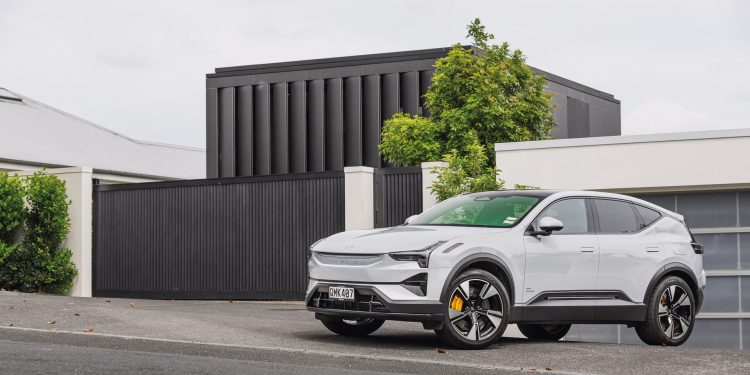2024 Polestar 3 Long Range Dual Motor Review
Words: Peter Louisson | Photos: Isaac Western
Polestar fashions cars in avant-garde style. Even their original EV, the PS2, was dare-to-be-different. But the 4 and now Polestar 3 push design boundaries even further.
It has been a busy old time for Polestar lately, with the introduction of their 4, an electric performance SUV Coupe, sans a rear screen. Now there’s the closely related Polestar 3, only this one gets a glazed fifth door and a regular internal rear view mirror. To our mind, that’s a plus. There’s okay visibility out the back too but you won’t need to look there much. For the reversing and surround cameras take care of all that business for you. Well, during parking procedures at least.
So what exactly is this large electric offering? Polestar suggests the 3 is an SUV. However, despite being high rise, it has a lowish (watch your head), gently sloping roof, 20-inch wheels and lots of width, giving it an aggressive mien, especially without any grille up front. And its piece de resistance is the wee spoiler attached to the front of the bonnet, optimising aero no doubt but it’s the first of its kind I’ve ever seen.
Inside it is just as modern lux. There’s a big portrait style central screen that fairly much runs the show. But, unlike Tesla, there’s a small rectangular screen you view through the wheel. It shows all the critical info you might want to know about instantly, speed, max speed in the area you’re in, and of course remaining battery and range for this is a fully electric offering, like all Polestars offered here.
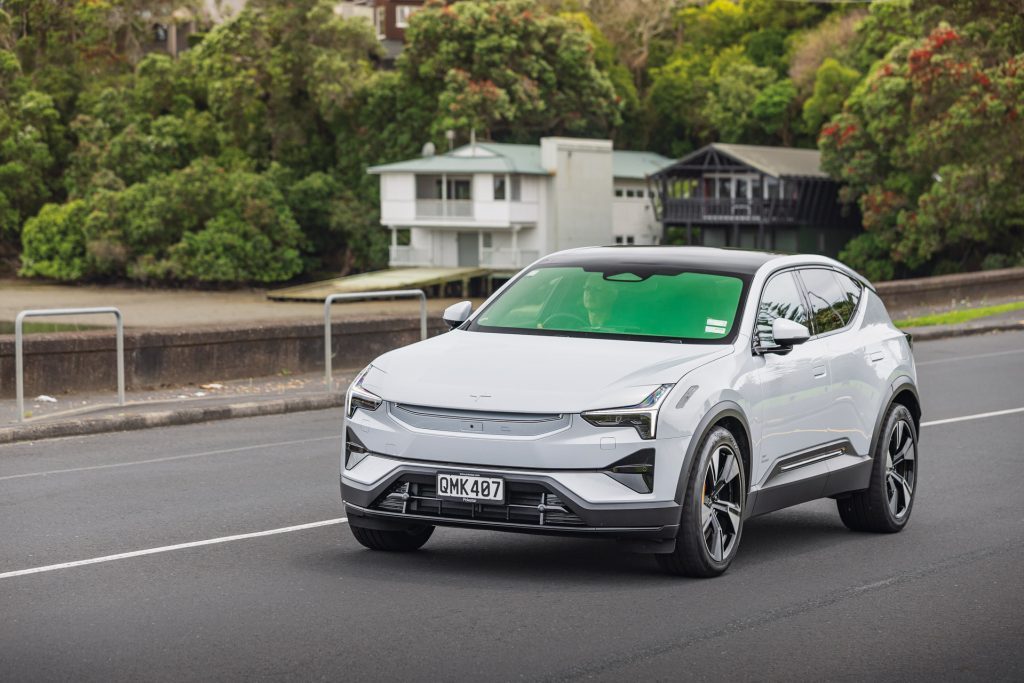
Polestar 3 more expensive than PS4
There are essentially 2+1 variants in the PS3 line-up. The entry-level 3 is the Long Range Single Motor model that costs $169,900 plus ORCs. The one you see here is the Long Range Dual Motor variant ($184,900 plus ORCs). The +1 we referred to is the same thing with the Performance Pack (adds 20kW/70Nm) and it will set you back $194,990.
Read more 2024 Polestar 4 Long Range Dual Motor review
The entry variant with one motor has 220kW and 490Nm, offering a 0-100 time of 7.8sec. Our dual-motor tester has 360kW from a pair of 180kW motors, and 840Nm. Which is a substantial amount more and it’s rated to have a five-sec sprint time. Go for the top model and the extra herbs slash 0.3sec off that (4.7sec). The somewhat similar model 4 SUV coupe we drove last month is a second quicker or thereabouts and somewhat less expensive at $135k but it isn’t as well specified. It gets a smaller battery pack (still 100kWh vs 111 for the PS3) and steel suspension versus air suspension for the 3. Another difference is a torque vectoring rear set up for the more expensive 3 that the 4 doesn’t get.
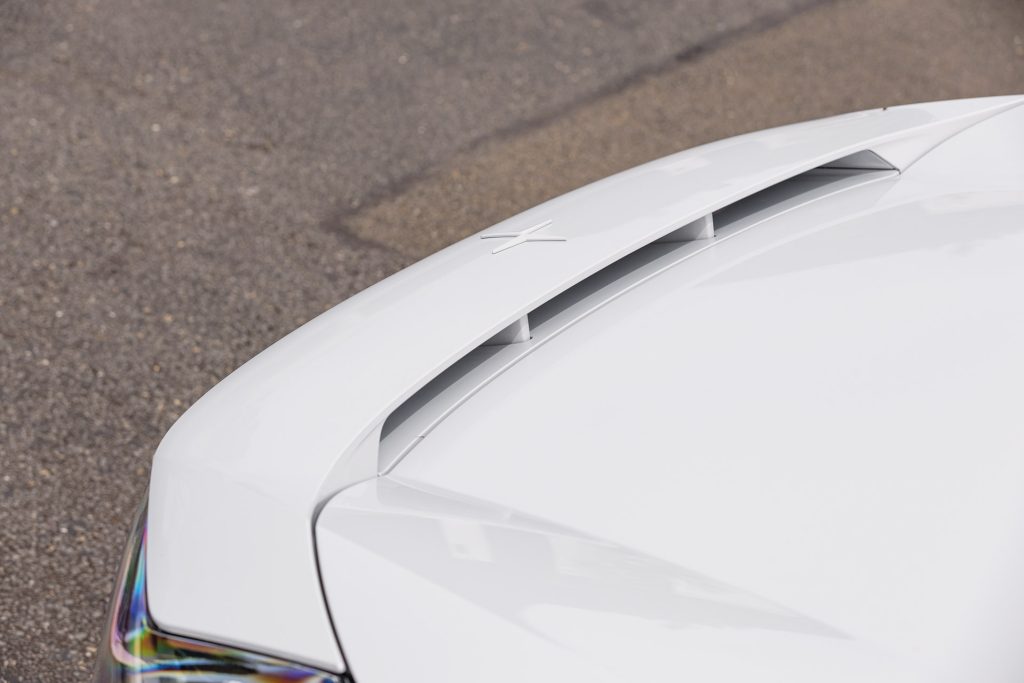
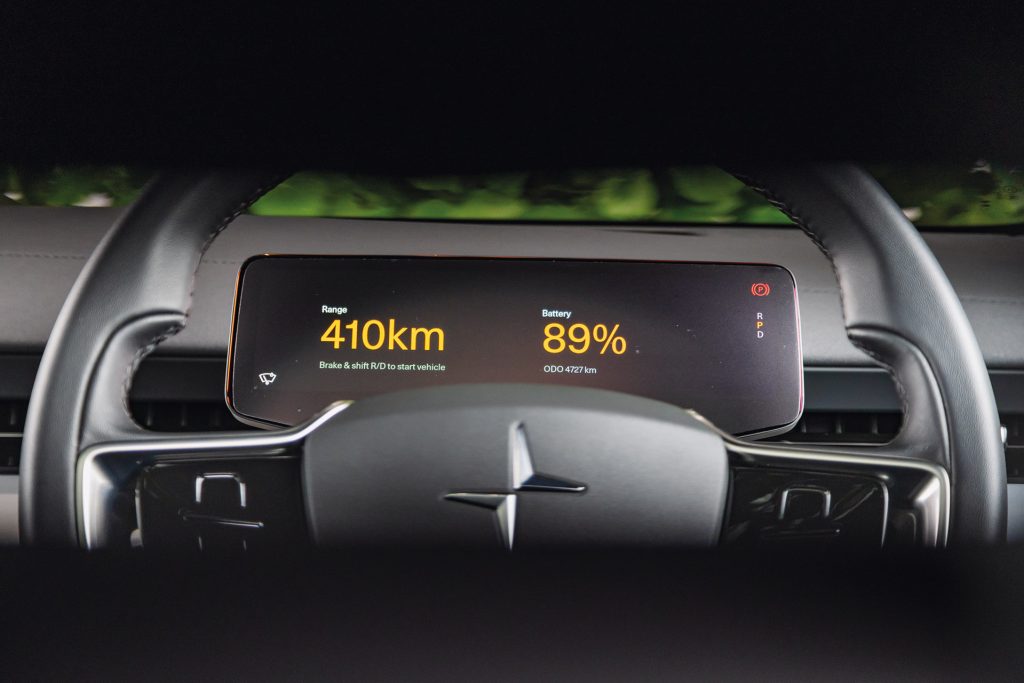
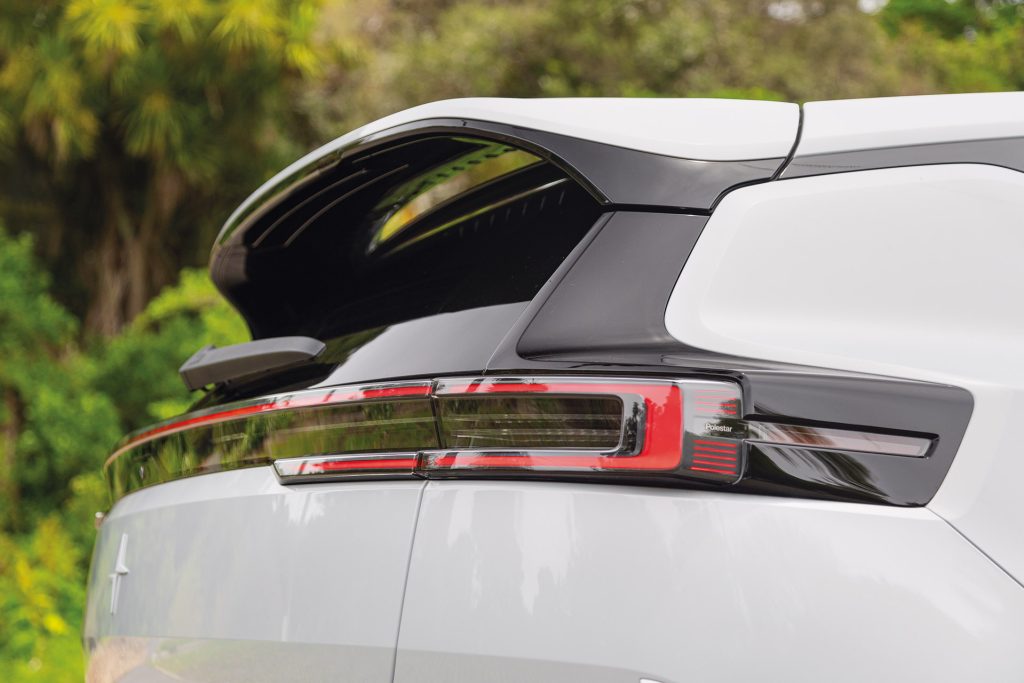
The three is a bit bigger too, 4900mm in length versus 4830mm. But Polestar 4 is somewhat lighter at 2232 versus 2575kg, in part explaining its extra turn of speed.
All versions of the Polestar 3 come with a full-length panoramic glass roof, LED lighting, retractable door handles with proximity sensing, and 21-inch alloys. The Pilot Pack and Plus Pack are fitted as standard for the first model year. So this means Pilot Assist, lane change assist, Park Assist Pilot (self parking), and 360 degree camera with 3D view. The Plus Pack adds a 25-speaker audio system from B&W, soft-closing doors, and head-up display. The sound system includes speakers in the front seat head rests, and active road noise cancellation. This is genuinely hushed (the car, that is). There’s also heating for front and rear seats, the wiper blades and steering wheel.
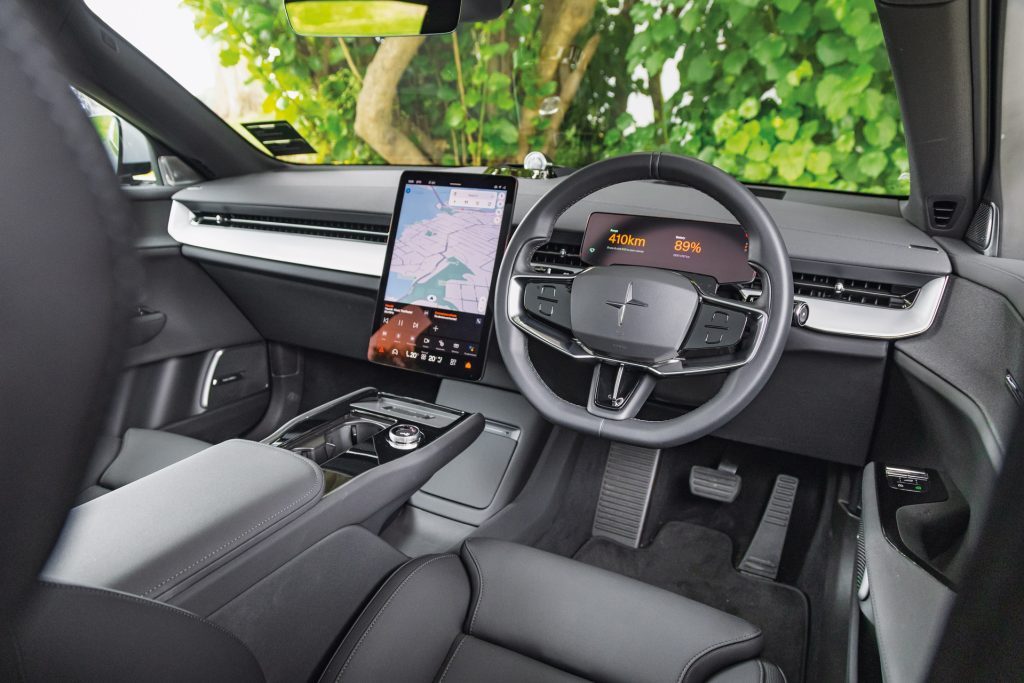
Polestar 3 Performance plenty sufficient
How did our dual motor Polestar 3 go? Our GPS-based performance device recorded a best sprint to the legal limit of 4.67sec. So we’d imagine the top model would click off a low fours 0-100km/h.
There are no modes here per se. Rather, there’s a Performance button which is either on or off. Otherwise it is just in the everyday default mode which I guess you’d call Normal.
This overtakes slower traffic with consummate ease. Response of course is instantaneous. And both overtakes took 2.8sec or 80m. That’s quick for a vehicle of this size and weight.
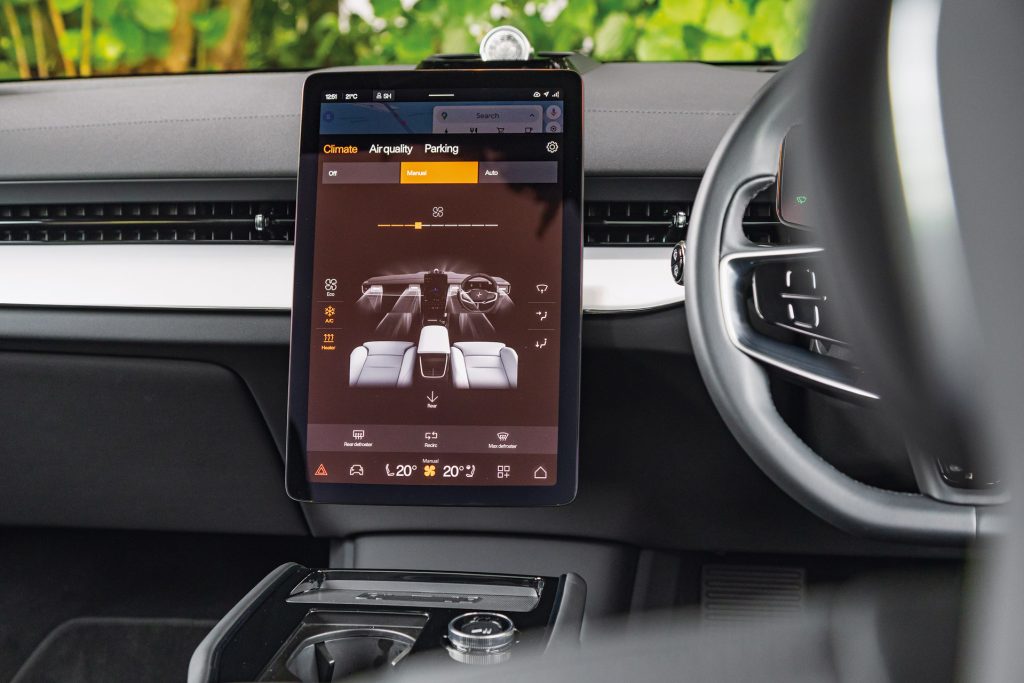
And where normally big vehicles often fail to dazzle on road, this is rather different. That enormous battery pack slung beneath the car keeps axle weights even and the torque vectoring rear diff means this can attack winding roads with verve. There’s decent steering heft (adjustable) and feel too. So from A to B this can be startlingly effective. Push it along and the battery starts to drain away with haste but if you’re in no great hurry it’s ever so much easier on energy. It took one-fifth of a charge to do our usual 110km run up north, and one hour on a 22kW charger to replenish 25 per cent. Figure on around 20kWh/100km in open road running. Polestar says up to 610km of range, though figure on a real world 500km.
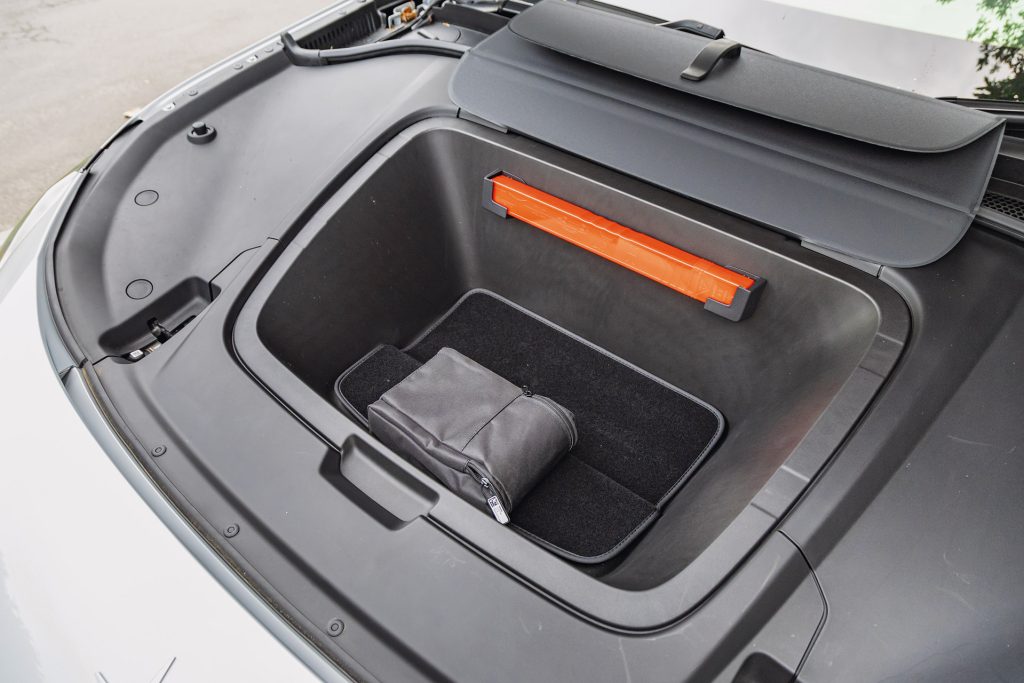
The regen settings in this are so well chosen. You can coast along with zero but it’s just way too quick in this mode; we’d start off at 100km/h and nek minnit it’s doing 125. You don’t need to look down because this has a head-up display. Choose the intermediate or ‘Low” single-pedal regen setting and this is just about perfect for everyday slowing, such that you seldom need brakes (other than to pull to a complete halt). The top setting, Standard, is a bit too intense. Should you ever need the actual brakes, these work fine, though because of its sheer weight the emergency stops arent special, the best being 35.7m.
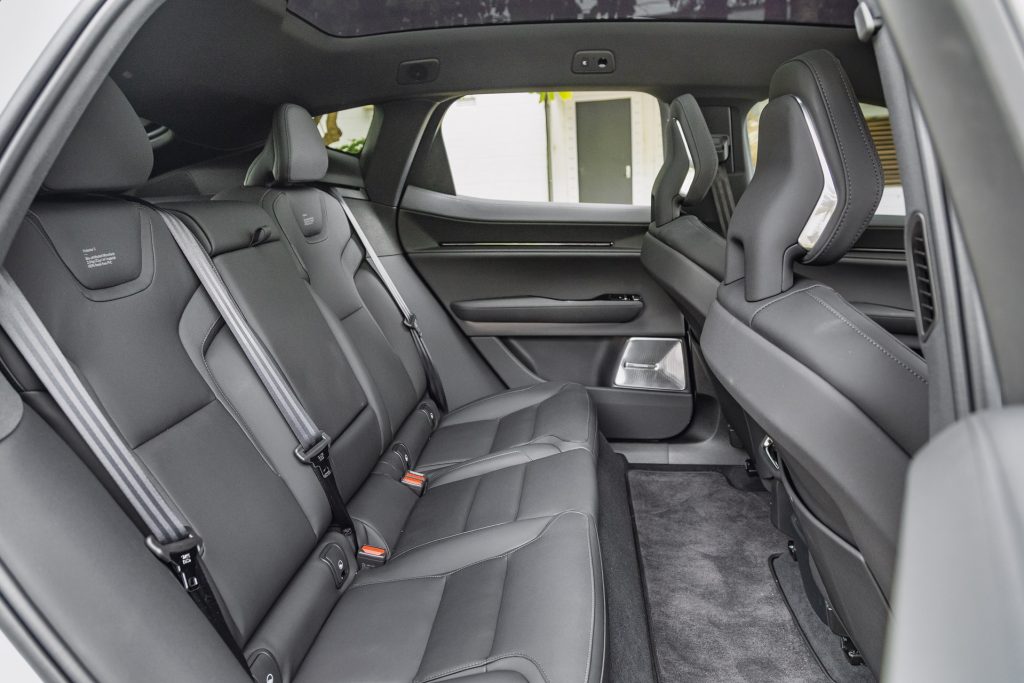
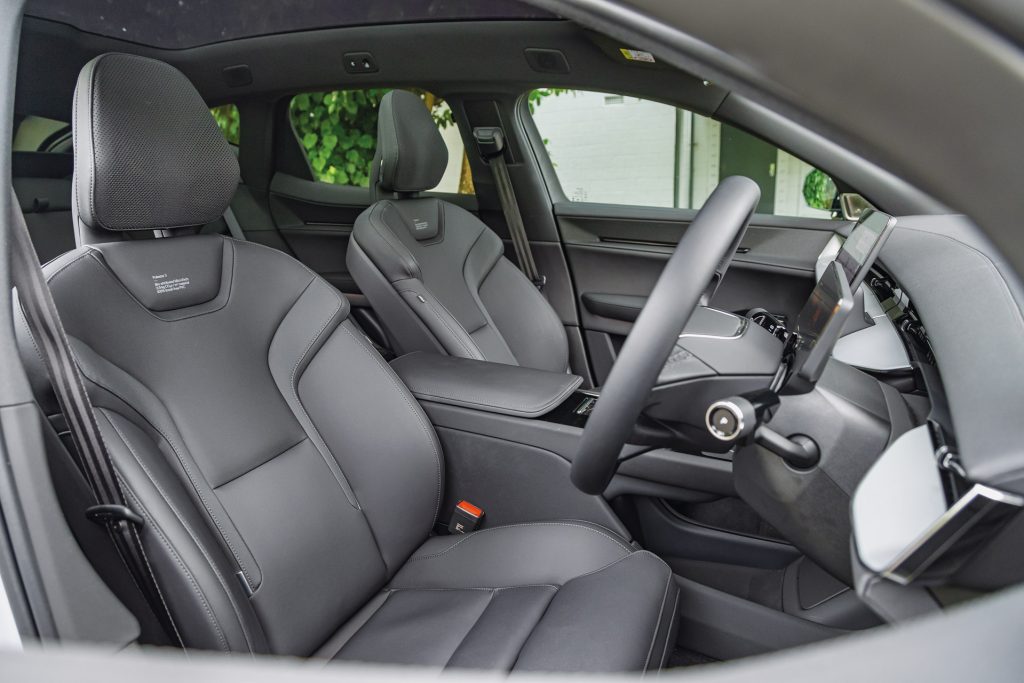
Easy to Run?
Polestars always poleaxe me on day one. Having discovered that you mess about with the seat adjustments in the PS4’s central touchscreen, I figured it would be the same for the PS3. Turns out not. It’s all run by a single control button down on the right side of the driver’s seat. But it’s not that intuitive in use.
The next day, after discovering that you double click the right sided column shift lever to access adaptive cruise, we spent the next wee while trying to work out how to adjust speed up and down (the buttons on the left side of the wheel, stupid). However, I don’t believe you can adjust distance from the vehicle in front. This seems to take care of itself, leaving a sizeable gap that everyone piles into. Which is fine; in stop-start traffic at least active cruise doesn’t get distracted. I did and was appropriately admonished, with a pair of soft bongs.
And as for other controls you might want to mess with, they’re in the central screen, some with shortcuts. We opted to turn off the self steering aspect of ACC. And you can also opt out of lane keeping in the IFT screen. This stays turned off too, until you want it back on. It’s all easy enough to fathom. The hired help was good at changing radio stations but often ‘didn’t understand’ my requests.
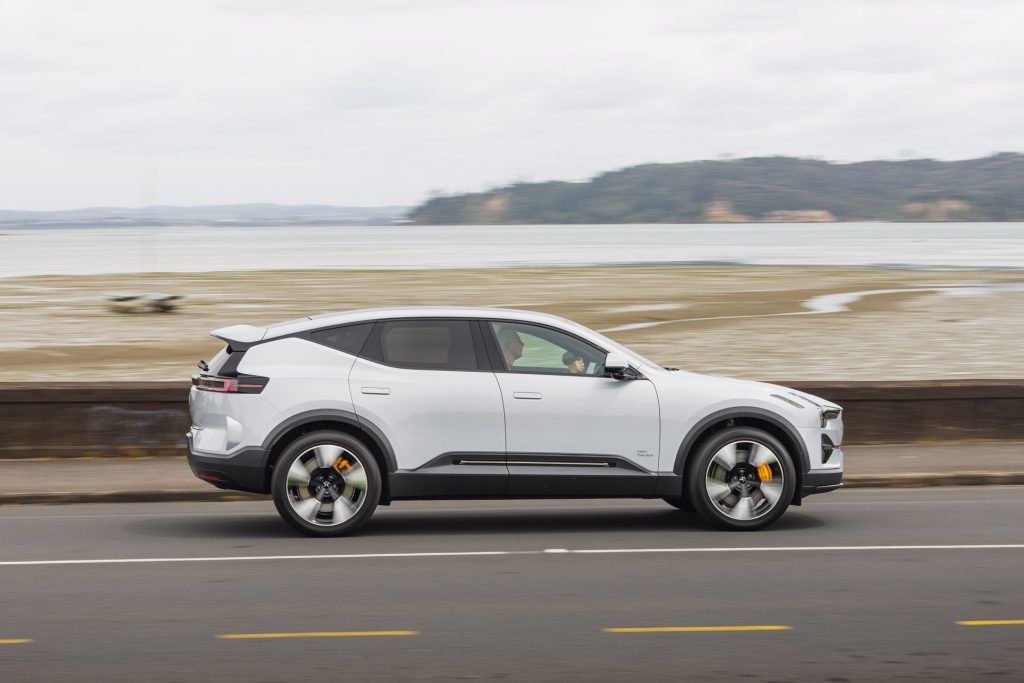
Space capsule
Anyhow, this is quite some machine if you have the need for five genuinely spacious seats and a fair mess of room in the hold. There’s 484L with five seats in use (597L to the roofline) and 1411L after compacting the rear seats. The load bay is almost completely flat on a single level, and headrests flop out of the way as you fold down the seat backs. There’s a hideyhole beneath the boot floor too.
This is really a very pleasant place to travel in. The seats are comfy once you’ve sorted out the adjustment button, with good squab cushioning and lumbar adjustment. And it’s so hushed. Even on the worst seal the road-generated noise is limited (68.6dB) and you’d not credit how well this rides, given how impressively it handles for a big vehicle. But then that’s often the way with modern air suspension. Control and cushioning all in one.
The interior is not quite as radical on the styling front. But it’s certainly well done. There’s a lone rotating volume control in the centre console for the seriously impressive B&W sound system. It features a hifi-like tweeter in the centre of the dash up by the windscreen, a host of speakers, including a couple in the driver’s headrest, and an active noise cancelling system.
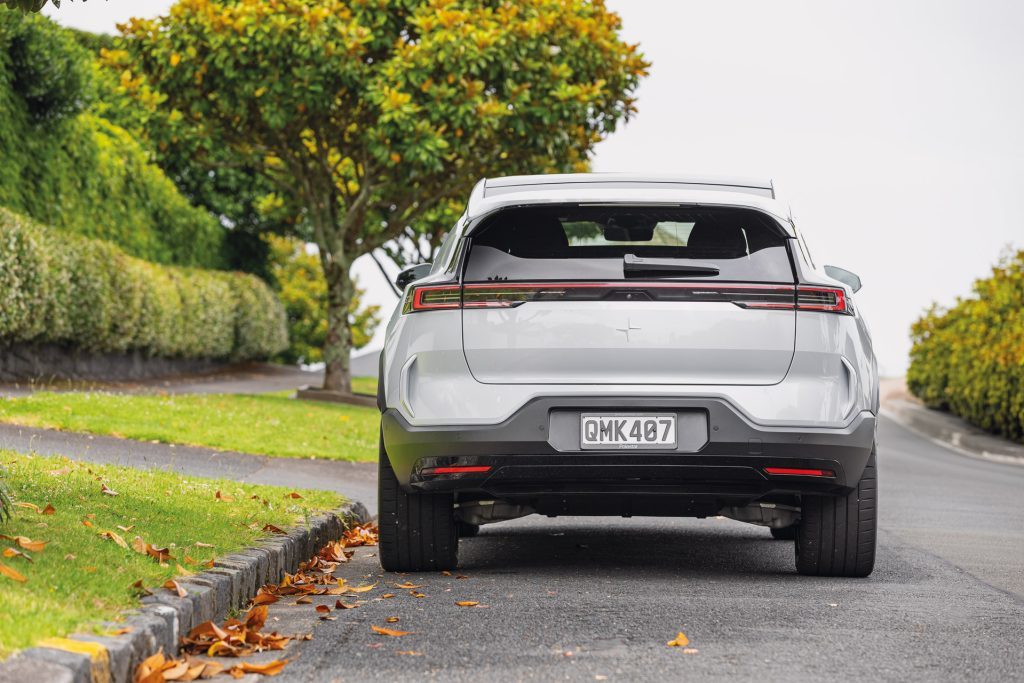
Aside from the fancy sound system, there’s also a proximity key, a power-operated steering column, Air Quality with PM 2.5 sensor, and soft-close doors. And figure on a heat pump, battery preconditioning, and bidirectional changing. There’s also a whopping glass roof above, which makes it light inside, sometimes a little too much depending on where the sun is coming from. The climate control system you can leave in dog mode if poochie is locked inside.
We had no software SNAFUs, which seem common in some of the new energy vehicles from China, and only the bonnet opener played up. There’s a handy frunk under there too.
So, it’s pretty quick and competent, while Polestar 3 is also rather slick to behold. Inside is equally alluring. It will be interesting to see how this stacks up against EX90 with which it shares a platform, and the top (more expensive) BMW iX variants.
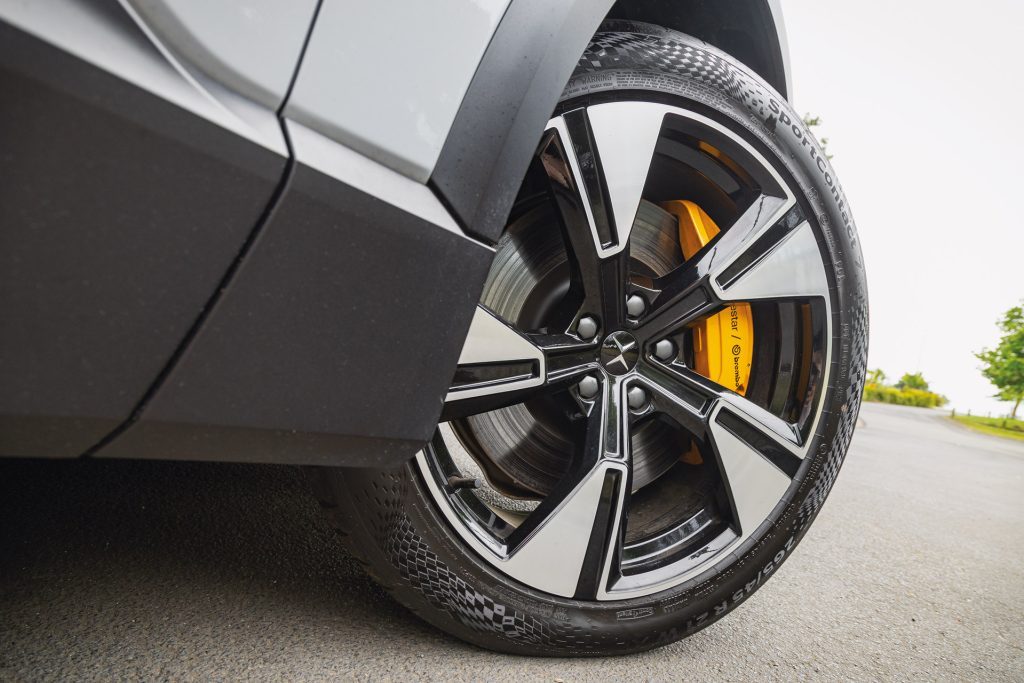
Polestar 3 Long Range Dual Motor NZ specifications and pricing
$184,900 / 19.7kWh/100km / 0g/km
0-100 km/h 4.64s
80-120 km/h 2.81s (80.64m)
100-0 km/h 35.70m
Speedo error 97 at an indicated 100km/h
Ambient cabin noise 68.6dB@100km/h
Motor output 360kW
Max torque 840Nm
Battery 107kWh
Range 610km
Drivetrain Single-speed auto / AWD
Front suspension Wishbones/ air spings
Rear suspension Multilink / air springs
Turning circle 11.8m (2.4 turns)
Front brakes Ventilated discs (400mm)
Rear brakes Ventilated discs (390mm)
Stability systems ABS, ESP, TV
Safety AEB, ACC, BSM, LDW, RCTA, ALK, AHB
Tyre size f-265/45R21 r-295/40R21
Wheelbase 2985mm
L/W/H 4900 / 1968 / 1614mm
Track f-1602mm r-1601mm
Luggage capacity f-32L r-484-1411L
Tow rating 750kg (2200kg braked)
Service intervals 24 months/30,000km
Scheduled servicing 3yrs / unlimited km
Warranty 3yrs / unlimited km
ANCAP rating not yet rated
Weight (claimed) 2579kg


